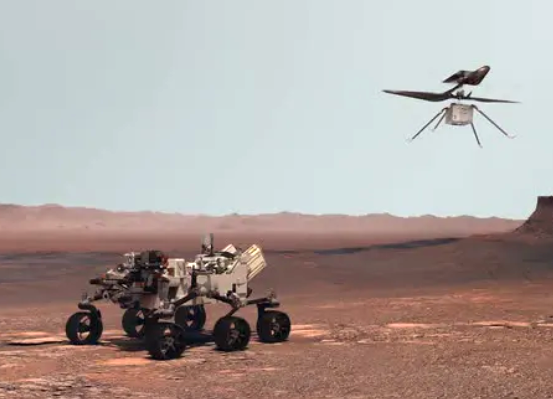Mars mission making way
 NASA’s latest mission to Mars is underway, carrying with it the first ever drone to fly on another planet.
NASA’s latest mission to Mars is underway, carrying with it the first ever drone to fly on another planet.
NASA's Mars 2020 Perseverance rover mission is on its way to the Red Planet. It will land at Jezero Crater in about seven months, on Feb. 18, 2021, to search for signs of ancient life and collect samples to send back to Earth.
The mission includes the most sophisticated rover launched (named Perseverance), as well as the Ingenuity Mars Helicopter.
The Ingenuity drone weighs just 1.8kg, and features four specially made carbon-fibre blades, arranged into two rotors that spin in opposite directions at around 2,400 rpm – many times faster than a passenger helicopter on Earth.
Because Mars has almost no atmosphere, Ingenuity has very little to push against when it takes off. Flying the helicopter on Mars will require about as much force as ascending to 100,000 feet on Earth – much higher than any similar device has actually flown.
Ingenuity will remain attached to the belly of Perseverance for the flight to Mars and the first 60 or so days on the surface. Its role is as a technology demonstrator, its goal is a pure flight test – it carries no science instruments.
A technical review of Ingenuity can be seen below.
The Perseverance rover's astrobiology mission is to seek out signs of past microscopic life on Mars, explore the diverse geology of its landing site, Jezero Crater, and demonstrate key technologies that will help us prepare for future robotic and human exploration.
“Jezero Crater is the perfect place to search for signs of ancient life,” said Thomas Zurbuchen, associate administrator for NASA's Science Mission Directorate.
“Perseverance is going to make discoveries that cause us to rethink our questions about what Mars was like and how we understand it today. As our instruments investigate rocks along an ancient lake bottom and select samples to return to Earth, we may very well be reaching back in time to get the information scientists need to say that life has existed elsewhere in the universe,” he said.
The Martian rock and dust that Perseverance's Sample Caching System collects could answer fundamental questions about the potential for life to exist beyond Earth.
Two future missions currently under consideration by NASA, in collaboration with ESA (European Space Agency), will work together to get the samples to an orbiter for return to Earth. When they arrive on Earth, the Mars samples will undergo in-depth analysis by scientists around the world using equipment far too large to send to the Red Planet.
About seven cold, dark, unforgiving months of interplanetary space travel lay ahead for the mission.
<iframe width="560" height="315" src="https://www.youtube.com/embed/GhsZUZmJvaM" frameborder="0" allow="accelerometer; autoplay; encrypted-media; gyroscope; picture-in-picture" allowfullscreen></iframe>







 Print
Print